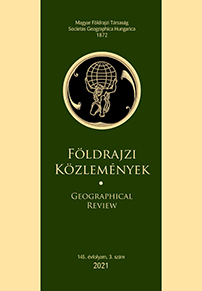The Beginning of the Nationwide Landscape Character Assessment in Hungary
Abstract
Landscape character assessment is built on the Landscape Convention of the Council of Europe, which considers landscape as an area perceived by man, formed by the interactions of man and nature. According to the exemplary British practice of landscape character assessment, the particular combination and the unique composition of landscape elements have to be taken into account rather than the specific features independently. Its primary concern is that the whole is more than the sum of the parts. Landscape character assessment results in the identification of landscape character types and landscape character areas. Identifying the character types and character areas happens at more hierarchy level (national, regional, micro-regional and local level). Defining the boundaries, the characteristics, and the main factors contributing to the formation of the character should be a value-free description of the given state. The following stage of the assessment is the landscape evaluation. Making a judgement on the actual state involves locals in a participatory process, and it is the preparatory phase of formulating the landscape quality objectives. In Hungary, the first landscape character assessment, covering the entire area of the country, was carried out between 2017 and 2021. Four micro-regional case studies complemented the nationwide research. The present paper gives a brief overview of the methods used at the national level, including the feedback from the micro-regional assessment, and summarises the results.
Copyright (c) 2021 Éva Prof. Konkoly-Gyuró, Vilja Vaszócsik, Péter Csorba, Krisztián Schneller, Sándor Jombach, Zsombor Boromissza, Tímea Erdei, Ákos Keszthelyi, Pál Balázs, Dániel Kiss, Mónika Teleki, András Bánhidai, Mónika Csőszi

This work is licensed under a Creative Commons Attribution-NonCommercial-NoDerivatives 4.0 International License.



